#appalachian folklore
Text
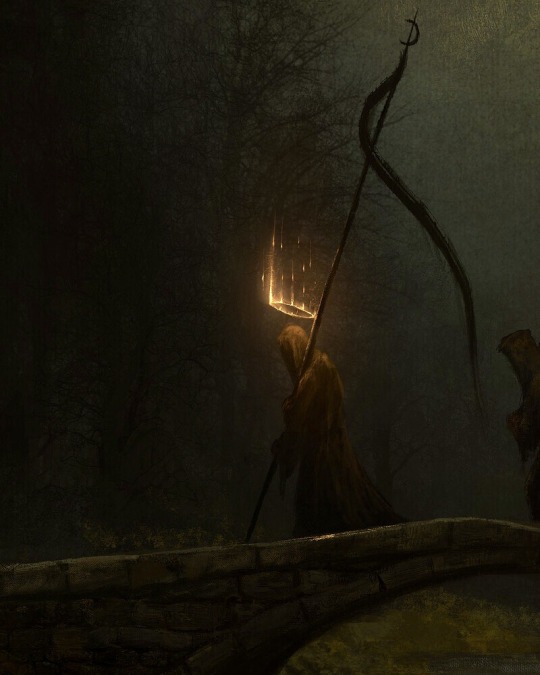
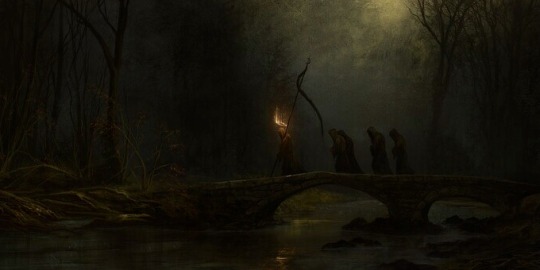
Nightwalkers by Ben J
#art#artist#artblr#painting#oil on canvas#oil painting#dark art#macabre#goth#gothic#appalachian horror#art community#horror#dark academia#artists#witch#witchcore#appalachian gothic#witchblr#appalachian witch#art blog#modern art#contemporary art#art gallery#digital art#gothcore#appalachian folklore#appalachia#art history
4K notes
·
View notes
Text
the appalachian murder ballad <3 one of the most interesting elements of americana and american folk, imo!
my wife recently gave me A Look when i had one playing in the car and she was like, "why do all of these old folk songs talk about killing people lmao" and i realized i wanted to Talk About It at length.
nerd shit under the cut, and it's long. y'all been warned
so, as y'all probably know, a lot of appalachian folk music grew its roots in scottish folk (and then was heavily influenced by Black folks once it arrived here, but that's a post for another time).
they existed, as most folk music does, to deliver a narrative--to pass on a story orally, especially in communities where literacy was not widespread. their whole purpose was to get the news out there about current events, and everyone loves a good murder mystery!
as an aside, i saw someone liken the murder ballad to a ye olde true crime podcast and tbh, yeah lol.
the "original" murder ballads started back across the pond as news stories printed on broadsheets and penned in such a way that it was easy to put to melody.
they were meant to be passed on and keep the people informed about the goings-on in town. i imagine that because these songs were left up to their original orators to get them going, this would be why we have sooo many variations of old folk songs.
naturally then, almost always, they were based on real events, either sung from an outside perspective, from the killer's perspective and in some cases, from the victim's. of course, like most things from days of yore, they reek of social dogshit. the particular flavor of dogshit of the OG murder ballad was misogyny.
so, the murder ballad came over when the english and scots-irish settlers did. in fact, a lot of the current murder ballads are still telling stories from centuries ago, and, as is the way of folk, getting rewritten and given new names and melodies and evolving into the modern recordings we hear today.
305 such scottish and english ballads were noted and collected into what is famously known as the Child Ballads collected by a professor named francis james child in the 19th century. they have been reshaped and covered and recorded a million and one times, as is the folk way.
while newer ones continued to largely fit the formula of retelling real events and murder trials (such as one of my favorite ones, little sadie, about a murderer getting chased through the carolinas to have justice handed down), they also evolved into sometimes fictional, (often unfortunately misogynistic) cautionary tales.
perhaps the most famous examples of these are omie wise and pretty polly where the woman's death almost feels justified as if it's her fault (big shocker).
but i digress. in this way, the evolution of the murder ballad came to serve a similar purpose as the spooky legends of appalachia did/do now.
(why do we have those urban legends and oral traditions warning yall out of the woods? to keep babies from gettin lost n dying in them. i know it's a fun tiktok trend rn to tell tale of spooky scary woods like there's really more haints out here than there are anywhere else, but that's a rant for another time too ain't it)
so, the aforementioned little sadie (also known as "bad lee brown" in some cases) was first recorded in the 1920s. i'm also plugging my favorite female-vocaist cover of it there because it's superior when a woman does it, sorry.
it is a pretty straightforward murder ballad in its content--in the original version, the guy kills a woman, a stranger or his girlfriend sometimes depending on who is covering it.
but instead of it being a cautionary 'be careful and don't get pregnant or it's your fault' tale like omie wise and pretty polly, the guy doesn't get away with it, and he's not portrayed as sympathetic like the murderer is in so many ballads.
a few decades after, women started saying fuck you and writing their own murder ballads.
in the 40s, the femme fatale trope was in full swing with women flipping the script and killing their male lovers for slights against them instead.
men began to enter the "find out" phase in these songs and paid up for being abusive partners. women regained their agency and humanity by actually giving themselves an active voice instead of just being essentially 'fridged in the ballads of old.
her majesty dolly parton even covered plenty of old ballads herself but then went on to write the bridge, telling the pregnant-woman-in-the-murder-ballad's side of things for once. love her.
as a listener, i realized that i personally prefer these modern covers of appalachian murder ballads sung by women-led acts like dolly and gillian welch and even the super-recent crooked still especially, because there is a sense of reclamation, subverting its roots by giving it a woman's voice instead.
meaning that, like a lot else from the problematic past, the appalachian murder ballad is something to be enjoyed with critical ears. violence against women is an evergreen issue, of course, and you're going to encounter a lot of that in this branch of historical music.
but with folk songs, and especially the murder ballad, being such a foundational element of appalachian history and culture and fitting squarely into the appalachian gothic, i still find them important and so, so interesting
i do feel it's worth mentioning that there are "tamer" ones. with traditional and modern murder ballads alike, some of them are just for "fun," like a murder mystery novel is enjoyable to read; not all have a message or retell a historical trial.
(for instance, i'd even argue ultra-modern, popular americana songs like hell's comin' with me is a contemporary americana murder ballad--being sung by a male vocalist and having evolved from being at the expense of a woman to instead being directed at a harmful and corrupt church. that kind of thing)
in short: it continues to evolve, and i continue to eat that shit up.
anyway, to leave off, lemme share with yall my personal favorite murder ballad which fits squarely into murder mystery/horror novel territory imo.
it's the 10th child ballad and was originally known as "the twa sisters." it's been covered to hell n back and named and renamed.
but! if you listen to any flavor of americana, chances are high you already know it; popular names are "the dreadful wind and rain" and sometimes just "wind and rain."
in it, a jealous older sister pushes her other sister into a river (or stream, or sea, depending on who's covering it) over a dumbass man. the little sister's body floats away and a fiddle maker come upon her and took parts of her body to make a fiddle of his own. the only song the new fiddle plays is the tale about how it came to be, and it is the same song you have been listening to until then.
how's that for genuinely spooky-scary appalachia, y'all?
#appalachia#appalachian murder ballads#murder ballads#appalachian music#appalachian culture#appalachian history#appalachian#appalachian folklore#appalachian gothic#tw violence against women#cw violence against women#cw murder#tw murder#folk music#folk#txt
460 notes
·
View notes
Text
Please read Mountain Magic by Rebecca Beyer
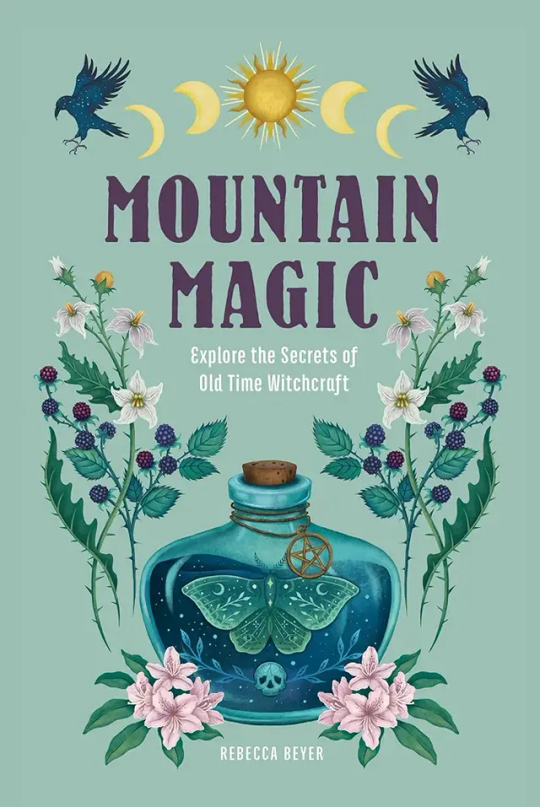
I was on a break from social media when I read this one, so this isn't a full review, but I highly, highly recommend this book to anyone interested in Appalachian folk magic. This is especially relevant to Southern Appalachian lore since Beyer lives in North Carolina.
I loved Beyer's first book, Wild Witchcraft, and with this one, I think she's officially become one of my favorite authors. This is a very thorough collection of folklore and practice for how short it is, and it's organized in a way that is easier for my ADHD brain to follow than some other authors.
I also have to gush about the illustrations. Both of Beyer's books are beautifully illustrated, but I think the art in this one is especially incredible. It's worth having a physical copy for the info alone, but the gorgeous art really makes this a book I want to display in my home.
Finally, I've found Beyer really helpful as an example of combining a pagan religious worldview with a Christian folk magic tradition. Her first book is very much pagan, with info on the God and Goddess and the Wheel of the Year. In this book, she talks about how Christianity has always been at the core of Appalachian folk magic and doesn't try to "paganize" the practice, while also leaving room for readers to bring their own beliefs to the table and explore what feels comfortable for them. This book did not feel preachy in the way some books on American folk magic do.
But yeah, this is just a really fantastic book, and I absolutely think every folk witch needs a copy of it on their shelf!
#mountain magic#rebecca beyer#books#favorite books#appalachian folk magic#appalachian folklore#southern appalachia#folk magic#folk witchcraft#traditional witchcraft#mine#book rec#book recommendations#witchblr#witch#witchcraft
198 notes
·
View notes
Text

Appalachian Snow Folklore ❄️
•Birds active and flying low, beware of a coming snow.
•Chimney smoke hugging the ground; there snow will soon be found.
•When the ground and grass is dry at morning light, expect snow before the night.
•When heavy frost is on the grass, snow seldom comes to pass.
•When the moon carries a halo, it’s a sign of coming snow.
•When there’s lots of snow, a fruitful crop will often grow.
•Rabbits moving on a winter day, a heavy snow is on the way.
•If snow lays on the ground for 3 days it’s waiting for another snow.
•When dimmer stars disappear, rain or snow is quite near.
•When clouds move against the wind, Rain or snow is around the bend.
•When hornets build their nest’s extra high; Look for snow nearing your thigh.
•If snow on the ground won’t melt, it’s waiting for more snow, or it’s calling it in.
•If snow sticks to the sides of trees, another snow will come in 48 hours.
•If the sun shines while it’s raining or snowing, it’ll come again the same time tomorrow.
•If there is no snow in January, snow will come in March or April.
(From the Foxfire Book. Banner Elk, North in Avery County)
#appalachian#appalachian mountains#north carolina#appalachian culture#appalachia#western north carolina#the south#nc mountains#snow#appalachian folklore#folklore#snowflake
59 notes
·
View notes
Text
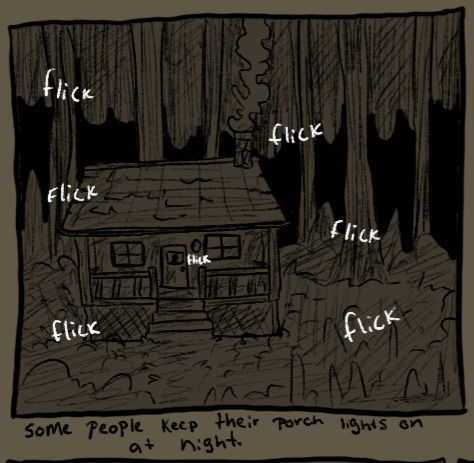
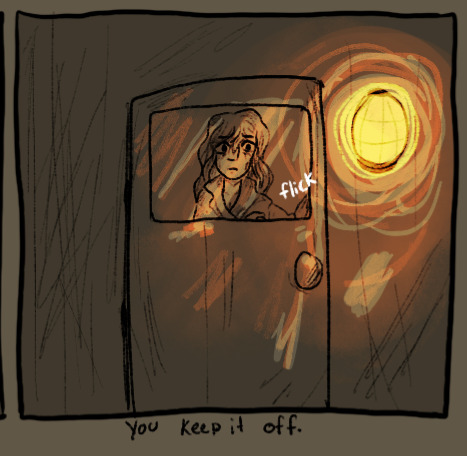


lil Appalachian Gothic comic I did a while back

#appalachia#appalachain gothic#appalachain mountains#appalachian folklore#folklore#gothic#artists on tumblr#art#digital art#my art#original character#oc#illustration#weirdcore#fantasy art#folklore art#faecore
35 notes
·
View notes
Text
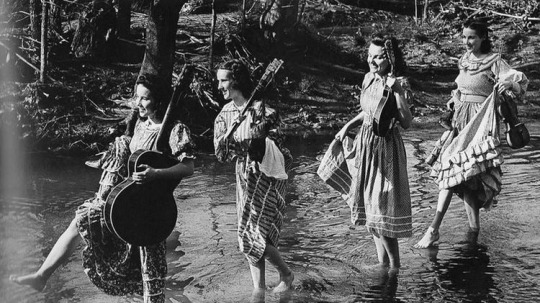
#appalachian#appalachia#appalachian gothic#appalachian culture#appalachian mountains#appalachian folk magic#rural appalachia#photography#old photos#country#folk magic#americana#americana aesthetic#appalachian folklore#appalachian trail#aesthetic#pinterest#girlblogger#girlblogging#vintage americana#vintage#bluegrass#bluegrass origins#abandoned#thelostlisbonsister
134 notes
·
View notes
Text

#artists on tumblr#ai artwork#alternative#dark fantasy#horror art#“Truly Feral Boys”#way back up in the woods#appalachian folklore
19 notes
·
View notes
Text
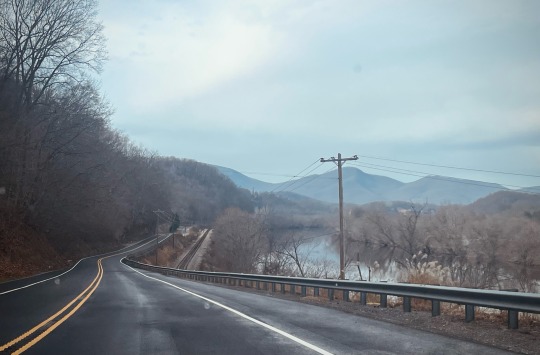
Nothing quite as restless as stick season as I’ve come to learn the hard way. I don’t think I could’ve made it through another winter like this. I’m back to being a visitor again - for the better.
#ima be so real with y’all this is sickening to endure this weekend#most of my time living in Greenville was during winter and early spring#it was gloomy the whole time I was there#mountains#Appalachia#appalachian mountains#appalachian folklore#appalachian trail#appalachian#appalachian gothic#southern gothic#gothic#mountain#hiking#travel#winter#winter aesthetic#campcore#camping#nature#virginia#foggyweather#outdoors#naturecore#dm me#adventure#me#message me#dms#photography
28 notes
·
View notes
Photo

Finished painting of my sphinx sona, Laurel.
This time with wavy red Oni hair as an alternate look~
She is in the Legendary category of Haint*. *(org. Gullah: spirit/ghost/demon)
She's a Wampus Cat, Sphinx type.
A six-legged version of the black panther cryptid of Appalachia.
116 notes
·
View notes
Text

An obsessive creature, this mysterious animal stopped at nothing in order to exact its revenge for the loss, and consumption, of its tail.
#BriefBestiary#bestiary#digital art#fantasy#folklore#legend#appalachian folklore#appalachian legend#demon#tailypo#tailbones#tallypo#tailipoesies#monster
69 notes
·
View notes
Text
BLOG INTRO
appalachian + southern goth
folk + appalachian witch
he / they + gay
love religious imagery
like or rb to be mutuals

#appalachian folk magic#appalachian folklore#appalachian gothic#appalachian witch#folk witchcraft#witchcraft#folklore#magick#witchblr#witch#occultism#folk magic
14 notes
·
View notes
Text
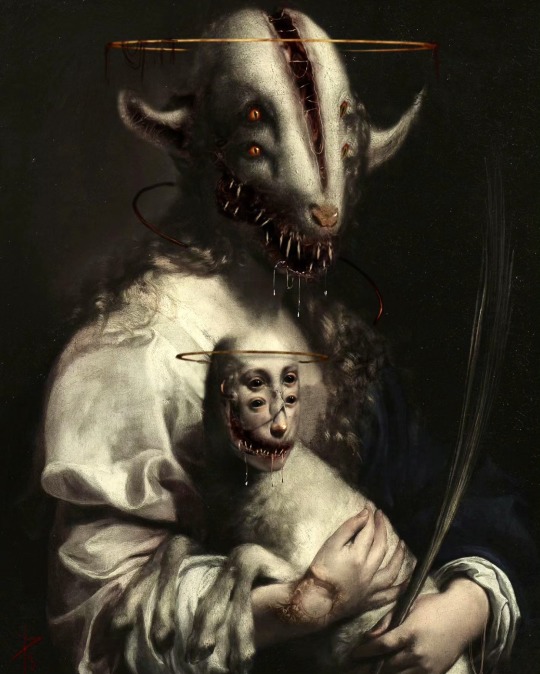
Art by Roberto Diaz
#art#artist#artblr#painting#art community#oil on canvas#oil painting#horror#dark art#macabre#creature#spooky#goth#gothic#witch#witchcore#appalachian horror#appalachian folklore#appalachian witch#artists#witchcraft#witchblr#art gallery#art blog#creatures
3K notes
·
View notes
Text
okay. i'm up to episode five now, so, by increasingly popular demand lol:
my initial thoughts about old gods of appalachia
i think it's really smart in what it relays as "appalachian horror," because this is actually what The Appalachian Gothic is supposed to give
what i mean is it's not just like the usual spoopy mythical forest/"don't investigate the noises in the woods" stuff alone. dgmw, obviously i love the urban legends
but the gothic of an area or time period needs cultural elements tied in to really make it chilling, and this does it well. it stands out in the way that it incorporates the genuine horrors of humanity in appalachia with the supernatural element everyone is drawn to about these mountains. it's very creatively done
like in the barlo, kentucky saga i am currently listening to, it's the dangerous coal mines and the near-possessed preacher turning all hellfire n brimstone at the behest of the haints. it preys (i use this word positively here) on this mix of very specific but common fears, both existential and otherwise, held by residents of the appalachian south. love it
as an aside, i love the narrator's accent because it sounds like mine :') a lifetime of code switching means mine isn't quite as strong unfortunately, but our pronunciation habits and colloquialisms are next to identical, so there manages to be this like warm and nostalgic feeling to it, too
because it's honestly so nice to hear my accent and my family's accent as a critical part of a superb story being told, and not just as a vehicle for mockery and stereotypes :')))
all in all... it is Good Shit
315 notes
·
View notes
Text
REVIEW: Backwoods Witchcraft by Jake Richards

I feel like Jake Richards's books are pretty popular with folk witches. If you have any interest in Appalachian folk magic, or even American folk magic more generally, you've probably at least heard of this book. Part of why I put off reviewing it for so long is because I feel like there's already been plenty of attention given to it online, so I'll try to make this brief.
Pros:
Definitely authentic Appalachian folk magic. Jake Richards writes about a lot of things I've seen people do or heard people talk about but never seen written anywhere.
This book is really well researched! I'm very impressed by all the references and footnotes.
I love that Richards uses the correct Tsalagi (Cherokee), Gaelige (Irish), and Gaelic (Scottish) words when talking about the cultures that influence Southern folk magic. I also love that he includes pronunciation guides.
Cons:
I didn't finish this book on my first read. It wasn't until I revisited it recently that I actually read to the end. Something about the writing style and the way the book is organized made it a little hard to follow at times, at least for me.
The research is generally good, but there's definitely more detail given for European and Cherokee cultural influences than for African. When talking about European influences, Richards will usually specify the specific country or culture something comes from, but for African influences he just says "African." While this research is harder to do because the slave trade intentionally cut people off from their cultural traditions, other authors like Luisah Teish and Stephanie Rose Bird have shown that we can often trace these African influences back to a specific culture, or at least a region. I would have liked to see the same level of effort put into researching African practices that went into the European ones.
Other Observations:
Christianity is a big part of the author's practice. This is faithful to traditional Appalachian conjure, but just know that it may be triggering if you've experienced religious trauma in a Christian setting. I found this book harder to read than other books on conjure that incorporate Christian elements, and I'm not sure why. Maybe it's because it sounded too similar to the Appalachian church where my abuse happened? Just something to be aware of if this is a tricky topic for you.
Overall Rating: 4/5 stars
#this will definitely be a 5 star book for other people#i am just picky#will definitely be picking up a physical copy tho#book review#book rec#jake richards#backwoods conjure#appalachian folk magic#appalachian folklore#southern folk magic#american folk magic#folk magic#folk witchcraft#witchy books#appalachia#my writing#mine#witchblr#witch#witchcraft
178 notes
·
View notes
Text

👨🏻🌾 Appalachian Garden Folklore:
In the mountains of Appalachia, it is said to be bad luck to say thank you if you ever receive cuttings or plants as a gift. The plant will not thrive. This is just one of many old folklore tells handed down from generation to generation. A lot of these folklores pertain to gardening. This was a way of life for many Appalachians and was taken very seriously. Their lives depended on their gardens producing well.
•Dreaming of thorns is bad luck.
•Tomatoes should be planted on Memorial Day.
•It’s good luck to steal herbs.
•A snowy winter portends a good year for crops.
•After planting a hill of beans, press the soil with your foot for good luck.
•Planting peppers when you’re mad, makes the peppers grow hotter.
•If 2 people’s hoes hit together, they will work in the same field next year.
•Trees that bloom twice in one year will have a bad crop.
•If you spit in your hands when cutting wood-you’ll have good luck.
•Don’t plant your garden until the oak leaves are the size of mouse ears.
•Always plant your potatoes on Good Friday.
•Plant your greenbeans on Good Friday.
•Anything planted on the first day of Spring will live.
•Bury nails around the roots of Hydrangea to make the blooms blue.
•To keep crows from bothering your garden, kill one and hang it nearby.
(Read more at https://growappalachia.berea.edu/2011/12/06/appalachian-garden-folklore-chad-brock-red-bird-mission/
By Chad Brock)
#appalachian#appalachian mountains#north carolina#appalachian culture#appalachia#western north carolina#the south#nc mountains#mcdowell county#mcdowellcounty#appalachian folklore#folklore#garden#gardening#appalachian food
133 notes
·
View notes
Text
I read up on skogsrå in the morning, listened to ghost stories about dead coal miners and mama bears in the afternoon, and watched Deer Lady avenge her friend in the evening.
It's a lore sort of weekend.
#year walk#old gods of appalachia#reservation dogs#skogsrå#barlo kentucky#deer lady#swedish folklore#appalachian gothic#appalachian folklore#indigenous folklore
39 notes
·
View notes